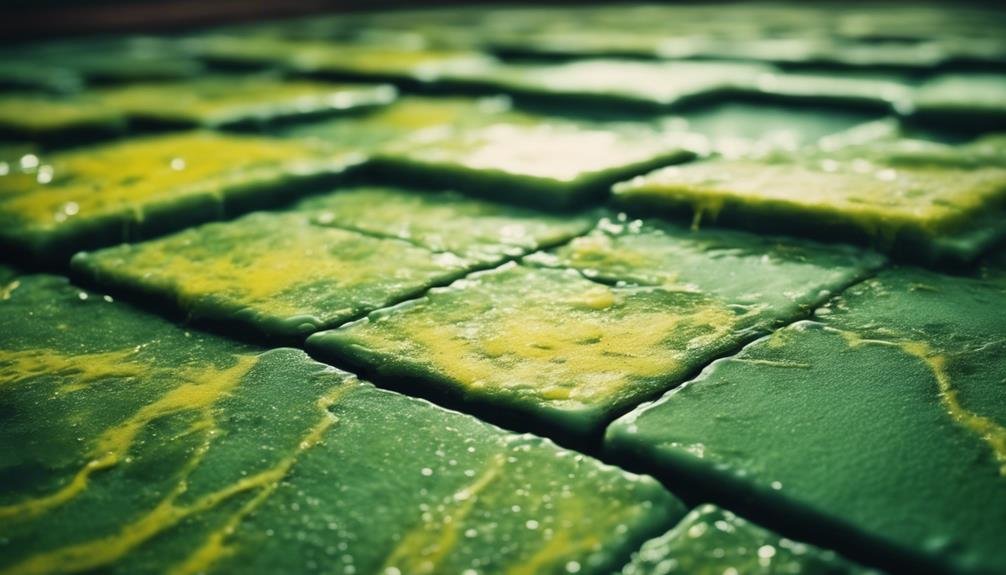Fixing leaks in a pond is a crucial task that begins with identifying the source of the issue. This can be done through visual inspections, dye tests, and monitoring the water level.
It is important to carefully examine the liners for any cracks, punctures, or signs of deterioration, focusing on seams and edges. If minor cracks are found, they can be fixed using pond sealants and putty knives following the product instructions.
In cases of severe damage, replacing the liner is necessary, which involves draining the pond, securely placing the new liner, and ensuring proper overlaps.
To prevent leaks in the future, regular inspections should be conducted, debris should be removed, and liners should be protected from sharp objects.
If you are unable to locate the leak using basic methods, it may be necessary to explore more advanced techniques to find and fix the issue. Remember, taking proactive measures and addressing leaks promptly can help maintain the health and longevity of your pond.
Leak Detection Techniques
When checking for leaks in a pond, the first step is to visually inspect the water level and the surrounding areas for any signs of water loss or seepage. If there's a noticeable decrease in water level or wet spots along the perimeter, it's likely that there's a leak present.
One effective technique to confirm a leak is the bucket test. This involves marking the water level, sealing a bucket, submerging it in the pond overnight, and comparing the water level inside the bucket to that of the pond. If the water level in the bucket drops more than in the pond, it indicates a leak.
Another method is the dye test. Adding a concentrated dye to the pond and observing where it surfaces can help pinpoint the exact location of the leak. This test is most effective when the ground is dry.
For larger ponds or more complex situations, it may be necessary to hire a professional leak detection service. These experts utilize specialized equipment such as geophones or underwater cameras to locate leaks more efficiently and accurately.
Identifying the source of the leak is crucial before proceeding with any repairs. By utilizing these detection methods, we can determine the exact location of the leak and then explore appropriate repair options tailored to address the specific issue at hand.
Pond Liner Inspection
In order to inspect the pond liner thoroughly, we'll carefully check every part of it for any signs of damage such as holes or cracks.
It's crucial to detect even small issues because they can eventually result in major leaks.
Inspect Liner Thoroughly
When conducting a detailed check of the pond liner, it's crucial to thoroughly examine it for any potential leaks and locate their origins accurately.
We'll conduct a meticulous inspection of the liner, paying close attention to any signs of damage or deterioration. There are four main areas that we'll focus on during the inspection:
- Seams and edges: We'll carefully examine all seams and edges of the liner to detect any cracks, holes, or separations that could lead to water leakage.
- Folds and wrinkles: Over time, folds and wrinkles in the liner can wear out and create leaks. We'll smooth out any folds and inspect for any signs of wear and tear.
- Punctures and tears: Objects like sharp rocks or animal claws can puncture or tear the liner. We'll diligently search for any punctures, tears, or holes, regardless of their size.
- Discoloration or deterioration: Exposure to sunlight, chemicals, and age can cause the liner material to deteriorate or change color. We'll carefully check for any areas that show signs of weakening or compromise.
Look For Damages
When inspecting the pond liner, we'll carefully examine every inch to find any damages. It's crucial to visually inspect for holes, cracks, or worn areas that could be causing leaks.
Paying close attention to seams and edges where the liner meets walls or other structures is key, as these are common problem areas.
Even small punctures or tears can lead to significant water loss over time, so we'll also look out for any rocks, roots, or sharp debris that may have caused damage.
Discolored or wrinkled areas could signal underlying issues, and if the liner appears brittle or degraded, it might need to be replaced.
During the inspection, we'll mark any areas of concern with a waterproof pen or stake flags for reference. Taking detailed notes and measurements will help us plan the repair process effectively.
Sealing Minor Cracks

To seal minor cracks in the pond liner, gather a few essential materials:
- a high-quality sealant specifically designed for ponds
- a putty knife or trowel for easy application
- sandpaper or a wire brush to prepare the surface
It's crucial to clean the area around the crack thoroughly and slightly roughen it to ensure that the sealant adheres effectively. This preparation step is essential for the longevity and effectiveness of the repair.
Before applying the sealant, make sure the surface is free of any debris or dirt that could compromise the adhesion. By taking the time to properly prepare the area and choose the right materials, you'll ensure a durable and effective seal for your pond liner.
Materials Required
To seal minor pond leaks, you'll need some basic supplies like hydraulic cement, pond liner sealant, and a putty knife. Make sure to have a container for mixing the cement or sealant, a stiff brush or roller for application, safety gear such as gloves and eye protection, and a plastic tarp to protect the surrounding area.
Start by cleaning the crack and its surroundings thoroughly for better adhesion. Follow the manufacturer's instructions to mix the cement or sealant properly. Use the putty knife to fill the crack with the mixture, pressing it in firmly.
For larger cracks, apply multiple layers, allowing each one to cure before adding more. Once the crack is filled, smooth the area with the putty knife for a seamless finish. Let the sealant cure completely before refilling the pond to prevent any washouts.
Preparing Surfaces
Before applying any sealant or cement to minor cracks, it's crucial to properly prepare the surface for better adhesion. Start by removing any loose or crumbling material around the crack with a wire brush or chisel. This step is essential to ensure a solid and clean surface for the sealant to stick to. Additionally, widening the crack slightly in an inverted 'V' shape will provide more area for the sealant to grip onto.
After clearing and shaping the area, thoroughly clean it using a degreaser or mild detergent solution. Any leftover oils, dirt, or debris can hinder the bonding of the sealant. Make sure the surface is completely dry before applying the sealant, as some products may require several hours to dry properly.
Once the prepared area is dry and clean, carefully follow the manufacturer's instructions to apply the pond sealant. Taking the time to prepare the cracks correctly will ensure a secure and long-lasting repair.
Liner Replacement Steps
Replacing a pond liner successfully requires careful preparation and precise execution to ensure a durable waterproofing solution. To achieve this, we'll follow these essential steps:
First, clear the pond area of any debris or vegetation to create a clean surface for the new liner.
Next, inspect the excavated area for any sharp objects or roots that could potentially puncture the liner. It's crucial to either remove these obstacles or cover them with a protective underlay to prevent damage to the new liner.
Once the area is prepped, unfold the new liner and position it following the manufacturer's guidelines, making sure to allow for proper overlap at the edges.
Secure the liner using the recommended anchoring method, such as burying the edges or using rocks or landscaping bricks to weigh them down.
Paying attention to detail is key during this process. We'll ensure the liner fits snugly into all corners and contours, eliminating any water channels or air pockets that could lead to leaks in the future.
Preventive Maintenance Strategies

Proper installation of the pond liner sets the foundation for a leak-free pond, but ongoing preventive maintenance is essential to ensure its longevity. Regular inspections are key to identifying any damage like cracks, punctures, or tears, allowing for prompt repairs before they escalate.
It's crucial to trim overhanging plants and remove debris that could potentially harm the liner.
To maintain the pond effectively, a maintenance schedule should be followed. Visual inspections should be conducted monthly, with debris removal scheduled weekly. Liner cleaning is recommended quarterly, and vegetation trimming should be done as needed.
Monitoring and adjusting water levels as necessary will prevent the liner from drying out, cracking, and developing leaks over time.
Hiring Professional Assistance
When dealing with complex pond leaks despite regular maintenance, it may be necessary to seek help from a professional pond contractor. There are several situations where hiring a professional becomes essential:
- If the source of the leak remains unknown even after thorough investigation.
- When specialized equipment or techniques are required for repairs beyond our capabilities.
- If the leak is in a difficult-to-reach location like under concrete or near utility lines.
- When we lack the time or physical ability to handle the repair work ourselves.
Professional contractors have the expertise and tools to efficiently identify and fix stubborn pond leaks. They use advanced methods like dye testing or electronic leak detectors to pinpoint the exact problem. With access to specialized repair materials and techniques, they ensure a lasting and effective solution.
While the initial cost of hiring a professional may be higher, it can prevent costly mistakes and ensure the job is done right the first time. Their knowledge reduces the risk of further damage and provides reassurance that our pond is in capable hands.
Conclusion
When dealing with pond leaks, it's crucial to act promptly to preserve water levels and the ecosystem. In this guide, we'll help you become adept at detecting leaks, implementing repairs, and adopting preventive measures.
However, if you encounter persistent challenges, consider seeking professional assistance. Their expertise can save you time, effort, and prevent costly mistakes in the long term.

